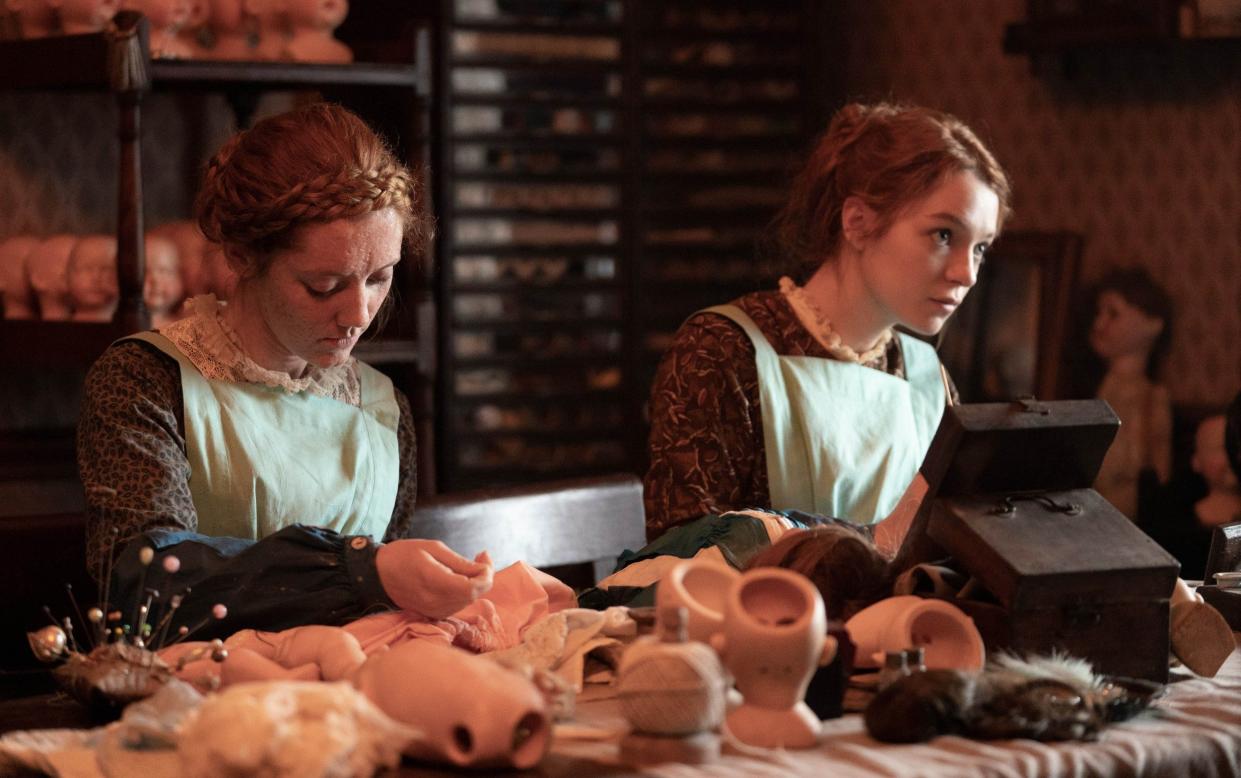The Doll Factory, Paramount+ review: Victorian bodice-ripper is in dire need of some heart and soul

- Oops!Something went wrong.Please try again later.
Nightmare fuel doesn’t come more clean-burning than a porcelain face gazing blankly from the window of a Victorian toyshop (unless it’s Nigel Farage showering on I’m A Celebrity….). That is the creepy energy upon which The Doll Factory (Paramount +) relies, occasionally to a fault. Adapted from a bestselling 2019 literary bodice-ripper, it takes in Pre-Raphaelite art, facial disfigurement, sexual repression, taxidermy and murder. But it’s those creepy doll heads that stay with you, setting the tone for this murky psychological thriller.
Scary dolls, repressed sexuality, and stuffed squirrels are a potentially heady mix. Alas, the retelling of the Elizabeth Macneal novel from the producers of ITV’s Marcella loses its way in the Dickensian gloom. It does so despite excellent lead performances by Esmé Creed-Miles (daughter of Samantha Morton) and Mirren Mack (Sex Education). They play non-identical orphan twins, Iris and Rose, who paint doll heads in the likeness of dead children – a trend in Victorian London, apparently – under the tutting gaze of Scrooge-like mistress, Mrs Salter (Pippa Haywood).
There’s also a boisterous turn by Éanna Hardwicke as a deranged taxidermist who could do with a girlfriend. Incels were seemingly a thing in the 19th century, too. Unfortunately, his villainous delivery oversells a part that, early on, cries out for nuance and misdirection. Derry Girls’ Saoirse-Monica Jackson is meanwhile wasted as a by-the-numbers jolly sex worker.
The real problem is a plot which unspools like treacle inching down a spoon. Iris and Rose have matching red hair. But the smallpox scars that Rose acquired as a teenager mean she is overlooked when a rakish artist is keen to find a new model. The attentions of Louis Frost – a fictional member of the real Pre-Raphaelite brotherhood – are instead drawn to the “effervescent” Iris. Initially wary, she becomes his model, muse and obsession.
The Doll Factory brims with moody shots of Iris posing for Louis (Industry’s George Webster) in sequences that resemble outtakes from a Florence and the Machine video. It’s undeniably pretty, with present-day Dublin an effective stand-in for Victorian London. Yet the pacing is so slothful it’s hard to stay invested. Entire scenes go by when the cast does little beyond sitting in the dark, looking glum.
There is also the wasted backdrop of the Great Exhibition of 1851. Meanwhile, a minor protagonist’s “shock” death is so hammy as to verge on comedy. The final episode is where it all unravels in earnest. It winks towards the supernatural and has a “twist” viewers will have seen coming from several time zones away. As pretty as a painted marionette, The Doll Factory ultimately lacks the qualities all good telly demands: a heart and a soul.

